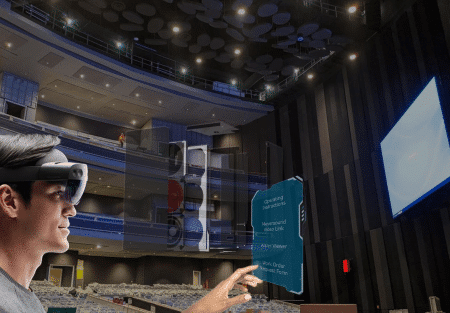
AIOps is Artificial Intelligence For IT Operations. It's the use of machine learning in IT operations. It is becoming a common way to manage IT infrastructure. AIOps has many benefits and you can follow numerous steps to get your business started. Let's examine these steps along with the requirements for architecture. Hopefully this article will give you some insight into this emerging technology.
Implementing AIOps
AIOps' main benefit is its ability to improve incident response time and user resolution. AIOps automatically identifies and predicts the likelihood of an issue. It also enables faster response to incidents, and can significantly improve organizational communication, team happiness, and operational efficiency. Find out how AIOps can help your business. These are just a few of the many benefits that AIOps can bring to your business. These solutions can assist you in achieving greater business success.
AIOps is an AI-powered technology that combines cloud computing with modern business agility and artificial intelligence (AI). The concept originated from Gartner and is an evolving evolution of ITOps. By integrating machine learning, big data, and artificial intelligence, AIOps can drastically improve your business's IT operations. These tools ensure that your company's IT operations are optimized and prevent any system outages.

Benefits
AIOps is a business tool that improves the speed and agility with which incidents are detected. The platform helps you streamline workflows and collaborate better. It automates processes to provide insights that allow for greater scalability as well agility. AIOps can help you cut down on the time required to resolve incidents. It also allows faster detection of service-impacting problems. AIOps can benefit DevOps by improving reliability and enhancing service levels.
AIOps platforms utilize advanced machine-learning to correlate data and pinpoint the root cause of problems. This system can also detect anomalies efficiently and quickly, which will improve user experience. Advanced analytics allows you to detect issues in performance or availability and then automate workflows to resolve them. This also helps your team move towards a ticket-less environment. AIOps solutions help you reduce the time, costs and effort required to resolve recurring incidents.
Implementation steps
IT teams need to first establish their goals and then their current IT infrastructure before they can successfully implement AIOps. A great place to begin when integrating AIOps is an IT service management (ITSM). AIOps provide valuable insight by modeling and analyzing data. AIOps' data-driven approach makes it easy for IT Ops professionals to transition into the role of Site Responsibil Engineer. However, it's not a perfect solution. It requires disciplined steps to make it work.
AIOps tools use data for analysis and insight. They should therefore be flexible and future-proof. These tools should allow for different metrics and techniques to be added as the company's needs change. Once these are in place, AIOps implementation is possible. Many steps can be taken in order to ensure your success. This article discusses the key steps required to implement AIOps successfully. These steps are listed in the following.

Architecture requirements
AIOps success hinges on having well-defined goals for AI implementation. While some executives may make AI a top priority, they may not define their specific needs. Instead, they should set specific, near-term and long-term goals and build an AIOps capability around those goals. Learn more about AIOps architecture requirements.
AIOps platforms need to detect anomalies and forecast future incidents. They also have to automate the root cause analysis process. They need to be able ingest large amounts of metrics simultaneously and process log data. These requirements are difficult to meet with legacy systems or current systems. But with AIOps, organizations can meet today's and tomorrow's challenges and evolve their operations to meet new business requirements. Here are the most critical architectural requirements for AIOps systems.
FAQ
Are there any AI-related risks?
Of course. There will always be. AI could pose a serious threat to society in general, according experts. Others argue that AI is not only beneficial but also necessary to improve the quality of life.
AI's misuse potential is the greatest concern. The potential for AI to become too powerful could result in dangerous outcomes. This includes robot overlords and autonomous weapons.
AI could eventually replace jobs. Many fear that AI will replace humans. Others think artificial intelligence could let workers concentrate on other aspects.
For instance, economists have predicted that automation could increase productivity as well as reduce unemployment.
How will governments regulate AI
The government is already trying to regulate AI but it needs to be done better. They must ensure that individuals have control over how their data is used. Aim to make sure that AI isn't used in unethical ways by companies.
They also need ensure that we aren’t creating an unfair environment for different types and businesses. You should not be restricted from using AI for your small business, even if it's a business owner.
What is the future role of AI?
Artificial intelligence (AI) is not about creating machines that are more intelligent than we, but rather learning from our mistakes and improving over time.
In other words, we need to build machines that learn how to learn.
This would enable us to create algorithms that teach each other through example.
You should also think about the possibility of creating your own learning algorithms.
You must ensure they can adapt to any situation.
How does AI impact the workplace
It will change the way we work. We'll be able to automate repetitive jobs and free employees to focus on higher-value activities.
It will help improve customer service as well as assist businesses in delivering better products.
It will allow us future trends to be predicted and offer opportunities.
It will enable companies to gain a competitive disadvantage over their competitors.
Companies that fail to adopt AI will fall behind.
Where did AI get its start?
Artificial intelligence began in 1950 when Alan Turing suggested a test for intelligent machines. He stated that a machine should be able to fool an individual into believing it is talking with another person.
John McCarthy later took up the idea and wrote an essay titled "Can Machines Think?" McCarthy wrote an essay entitled "Can machines think?" in 1956. He described in it the problems that AI researchers face and proposed possible solutions.
Statistics
- In the first half of 2017, the company discovered and banned 300,000 terrorist-linked accounts, 95 percent of which were found by non-human, artificially intelligent machines. (builtin.com)
- By using BrainBox AI, commercial buildings can reduce total energy costs by 25% and improves occupant comfort by 60%. (analyticsinsight.net)
- That's as many of us that have been in that AI space would say, it's about 70 or 80 percent of the work. (finra.org)
- More than 70 percent of users claim they book trips on their phones, review travel tips, and research local landmarks and restaurants. (builtin.com)
- According to the company's website, more than 800 financial firms use AlphaSense, including some Fortune 500 corporations. (builtin.com)
External Links
How To
How do I start using AI?
An algorithm that learns from its errors is one way to use artificial intelligence. This can be used to improve your future decisions.
For example, if you're writing a text message, you could add a feature where the system suggests words to complete a sentence. It could learn from previous messages and suggest phrases similar to yours for you.
The system would need to be trained first to ensure it understands what you mean when it asks you to write.
You can even create a chatbot to respond to your questions. If you ask the bot, "What hour does my flight depart?" The bot will respond, "The next one departs at 8 AM."
This guide will help you get started with machine-learning.